21 Bold Authentic Thai Meat Dishes To Spice Up Your Table
Thai meat dishes represent a vibrant culinary landscape where bold flavors dance across traditional recipes.
Sizzling proteins capture the essence of southeast asian cuisine with remarkable complexity.
Regional techniques transform simple ingredients into extraordinary meals bursting with aromatic spices and nuanced textures.
Each preparation tells a story of cultural heritage and generational cooking wisdom passed through families.
Culinary masters blend herbs, chilis, and marinades to create unforgettable taste experiences that tantalize the senses.
These dishes showcase remarkable skill in balancing sweet, sour, salty, and spicy elements with remarkable precision.
Passionate cooks elevate meat beyond mere sustenance into an art form celebrating regional diversity.
Hungry epicureans will find 21 authentic Thai meat dishes that promise a mouthwatering journey:
Authentic Thai Meat Dishes Bursting with Flavor
Thai cooks elevate meat with fresh herbs, coconut, and signature chili heat. From fiery curries to fragrant stir-fries, discover why these dishes are loved worldwide.
Thai Grilled Chicken (Kai Yang)
Kai yang represents Thai grilled chicken marinated with a complex blend of soy sauce, ginger, white pepper, fish sauce, vinegar, hoisin sauce, and aromatic herbs like cilantro, lemongrass, and garlic.
Originating with Lao people in northeastern Thailand, this popular dish has become a national favorite across the country.
Street stalls everywhere serve kai yang alongside sticky white rice and complementary dipping sauces that vary by region.
Sweet sauces dominate Central Thailand, while Northeastern regions prefer sour variations.
Fresh vegetable salad called som tam often accompanies the grilled chicken.
Restaurants and home cooks prepare kai yang by carefully marinating whole chickens before grilling or barbecuing them to perfection.
Regional variations ensure each bite carries unique local flavors.
Traditional preparation methods guarantee a succulent and flavorful chicken dish that showcases Thailand's rich culinary heritage.
Larb
Larb are zesty meat salads bursting with complex flavors from Laos and Thailand's Isan region.
Southeast Asian cooks prepare this dish using hand-minced meats like beef, pork, chicken, duck, or fish that can be raw or cooked.
Fresh herbs and khao khoua (toasted ground rice) provide additional texture and depth to each serving.
Lime juice and fish sauce or padaek create a tangy base that balances the meat's richness.
Seasonings vary widely across different regions, allowing for countless ingredient combinations.
Regional variations showcase unique local preferences and ingredient availability.
Small variations make each larb preparation distinct and memorable.
Herbs and spices transform this simple meat salad into a vibrant culinary experience.
Mu Daet Diao
Mu daet diao showcases Thailand's ingenious meat preservation technique with sun-dried pork slices marinated in a complex blend of fish sauce, garlic, coriander seeds, and sugar.
Vendors traditionally prepare this street food by soaking pork meat overnight in a salty marinade, then carefully drying slices under direct sunlight for hours.
Deep-frying transforms the meat into a crispy, fragrant delicacy with rich umami flavors and a satisfying crunch.
Street sellers typically serve mu daet diao alongside sticky rice, fresh tomato slices, and spicy chili sauce.
Regional variations include different marinades and spice combinations that enhance the meat's natural taste.
Small roadside stalls and som tum vendors often specialize in this savory snack.
Stir-Fried Chicken With Cashews (Kai Phat Met Mamuang Himmaphan)
Kai phat met mamuang himmaphan is a signature Thai stir-fry that combines crispy chicken with roasted cashew nuts in a savory sauce.
Bangkok street vendors and home cooks perfected this classic dish featuring tender chicken chunks tossed with crunchy cashews.
Marinated chicken pieces get quickly seared in hot oil with garlic and onions until golden brown.
Dried red peppers add a subtle heat to the fragrant mix of ingredients.
Oyster and soy sauces provide deep umami flavor and caramelized sweetness.
Scallions and additional nuts garnish the final plate for extra texture.
Restaurants across Thailand serve this popular protein-rich meal as a standard lunch or dinner option.
Diners love the balanced blend of salty, sweet, and spicy flavors in every bite.
Khao Kha Mu
Khao kha mu are slow-braised pork leg infused with aromatic spices, a beloved street food sensation from Thailand that transforms simple ingredients into a mouthwatering meal.
Street vendors across Thailand specialize in this iconic dish, carefully searing and braising pork leg in a complex blend of anise, coriander, five spice powder, soy sauce, and palm sugar.
Dark, rich broth penetrates deep into tender meat, creating an irresistible flavor profile that melts in you mouth.
Accompanying side dishes like boiled eggs, mustard greens, and Chinese broccoli absorb the same fragrant cooking liquid.
Served generously over steamed rice, the dish offers a perfect balance of savory and sweet notes.
Each plate tells a story of traditional Thai culinary techniques passed through generations.
Restaurants and street stalls compete to create the most memorable khao kha mu experience.
Mu Kratha
Mu kratha merges Korean barbecue and Chinese hot pot techniques into a unique Thai street food experience with grilled pork slices atop a metal dome surrounded by simmering broth.
Charcoal-heated pans create a distinctive cooking method where diners grill meat while simultaneously boiling vegetables, fish balls, and mushrooms in the surrounding liquid.
Specialized metal pans feature a raised central dome for grilling meats and a lower circular trough for simmering additional ingredients.
Spicy dipping sauces called nam chim accompany the dish, adding complex flavor layers to the grilled and boiled components.
Multiple ingredients cook simultaneously, making mu kratha an interactive and social dining experience.
Diners can customize their cooking by selecting various meats, seafood, and vegetables.
Sharing and cooking together remains central to mu kratha's culinary appeal.
Khao Mok Gai
Khao mok gai are fragrant rice-and-chicken parcels originating from Muslim-Thai culinary traditions, blending Persian biryani techniques with Thai flavor profiles.
Persian merchants introduced this spice-rich dish to Thailand centuries ago, transforming it into a beloved national favorite.
Tender chicken gets buried within aromatic rice layered with complex spices like turmeric, cardamom, and cumin.
Traditional preparation involves carefully seasoning both meat and rice to create a harmonious blend of flavors.
Signature accompaniments include fresh cucumber slices and a zesty mint-ginger dipping sauce called nam jim.
Historical records trace khao mok gai back to 18th-century Thai literature, highlighting its deep cultural roots.
Halal ingredients ensure the dish remains true to its Muslim culinary heritage.
Khua Kling
Southern Thai dry curry blends fiery curry paste with ground pork in a unique cooking method that creates an intensely flavored, almost dry stir-fry-like dish.
Red chili peppers, lemongrass, garlic, turmeric, cilantro, galangal, and shrimp paste form the aromatic base of the curry paste.
Palm sugar and fish sauce season the meat, ensuring deep flavor penetration without adding liquid.
Ground pork absorbs the spicy mixture completely during cooking.
Traditional preparation involves coating the meat thoroughly in the fragrant paste.
Regional variations might include slight adjustments to the spice blend.
Fresh vegetables and steamed rice typically accompany this spicy southern Thai specialty.
Deep-Fried Chicken And Lemongrass (Kai Thot Takhrai)
Kai thot takhrai epitomizes Thailand's bold street food culture with crispy fried chicken infused with aromatic lemongrass.
Marinated chicken pieces absorb complex flavors from kaffir lime leaves, sugar, black pepper, and savory sauces like oyster and fish sauce.
Chefs coat the meat in a flour-water mixture before deep-frying until golden and crunchy.
Each chicken piece retains its skin and bone for maximum flavor intensity.
Fragrant lemongrass strands are fried alongside the meat, adding a signature crisp texture.
Traditional preparation involves wings or legs as the preferred chicken cuts.
Kai thot takhrai offers a perfect balance of crispy exterior and juicy interior that makes it a beloved national favorite.
Mu Yang
Mu yang represents succulent grilled pork neck marinated in a bold blend of fish sauce, palm sugar, soy sauce, lime juice, and Thai whiskey.
Thai street vendors and restaurants frequently grill this meat until perfectly charred and tender.
Restaurants serve mu yang with steamed jasmine rice and fresh vegetable accompaniments.
Jaew, a spicy dipping sauce, always complements the grilled meat's rich flavors.
Salt and sugar balance the marinade's complex profile.
Diners enjoy this protein-packed dish as a popular street food and restaurant staple.
Northeastern Thailand particularly celebrates mu yang's simple yet intense flavor combinations.
Regional variations might include different marinades or grilling techniques that enhance the pork's natural taste.
Southern Thai Fried Chicken
Hat Yai chicken represents Southern Thailand's bold street food culture with crispy, deeply seasoned fried chicken that combines complex marinades and expert frying techniques.
Southern Thai cooks prepare this iconic dish using bone-in chicken pieces marinated in a robust blend of garlic, soy sauce, oyster sauce, and aromatic spices.
Traditional preparation involves coating marinated chicken in a seasoned flour mixture before deep-frying to achieve a golden, crunchy exterior.
Regional variations include different spice combinations and accompanying dipping sauces.
Authentic recipes emphasize using fresh ingredients and maintaining high-temperature frying for maximum crispiness.
Diners enjoy this chicken with sticky rice or fresh vegetables.
Travelers to southern Thailand often seek out this signature street food experience.
Mu Wan
Moo pad krapow is a spicy Thai street food staple featuring minced pork stir-fried with holy basil leaves in a hot wok until crispy and deeply caramelized.
Originating in Bangkok street markets, this dish combines intense flavors through a quick cooking process that creates a bold, umami-rich profile.
Fatty pork cuts like belly or shoulder work best for maximum taste and texture.
Garlic, chili peppers, and fish sauce provide deep seasoning layers that complement the meat's richness.
Palm sugar adds a subtle sweetness that balances the dish's spicy elements.
This popular one-pan meal represents Thailand's street food culture with its simple yet explosive taste combinations.
Thai Meat Hotpot With Galangal And Lemongrass (Chim Chum)
Tom chumis a rustic Thai cooking method featuring an interactive dining experience centered around a bubbling broth simmered in a traditional clay pot.
Diners cook their own marinated proteins like pork, chicken, or tofu directly at the table within a fragrant liquid infused with galangal, lemongrass, and Thai basil.
Vegetables complement the protein selections, creating a personalized meal where guests control cooking time and ingredient combinations.
Restaurant servers typically bring the hot earthenware pot filled with seasoned broth to the table alongside raw ingredients.
Meat and vegetable selections vary based on regional availability and personal preferences.
Accompaniments often include spicy dipping sauces that enhance the overall flavor profile.
Shared meals encourage social interaction and create memorable dining experiences.
Regional variations exist throughout different parts of Thailand, reflecting local ingredient availability and culinary traditions.
Luk Chin Ping
Luk chin ping are classic Thai street food morsels featuring succulent grilled or deep-fried meatballs bursting with savory herbs and spices.
Meat varieties like beef or pork form the base of these skewered delights, carefully seasoned with traditional Thai aromatics.
Street vendors across Thailand sell these popular snacks, which attract both children and adults with their irresistible flavor profile.
Bamboo skewers provide a convenient handheld eating experience for hungry customers.
Complementing the meatballs, a sweet-and-spicy dipping sauce adds an extra layer of complexity to each bite.
Simple ingredients and quick preparation make luk chin ping a favorite among locals and travelers.
Grilling or deep-frying creates a crispy exterior while maintaining a juicy interior.
Small yet satisfying, these meatballs represent Thailand's vibrant street food culture.
Mu Thot Krathiam
Mu thot krathiam is a zesty Thai stir-fry showcasing tender pork pieces coated in a rich, caramelized garlic sauce that delivers bold flavor complexity.
Thai home kitchens and street vendors have perfected this simple yet explosive dish through generations of culinary tradition.
Crispy garlic fragments coat succulent pork chunks, creating an irresistible golden-brown exterior with intense aromatics.
Restaurants across Thailand serve this dish as a quick, satisfying meal that balances sweet, salty, and umami notes.
Fish sauce, oyster sauce, and soy sauce form the foundational flavor profile, while sugar adds a subtle caramelized sweetness.
Minimal ingredients and quick preparation make mu thot krathiam a beloved staple in Thai cuisine.
Phat Phrik
Phat phrik is a spicy Thai dry curry blending green beans with fish, pork, or tofu in a complex flavor profile.
Green beans provide crisp texture while absorbing intense spice blends made from fresh chilis, lemongrass, and kaffir lime leaves.
Shallots and galangal create deep aromatic undertones that enhance protein selections like tender pork or delicate fish.
Ginger often adds extra warmth to this quick-cooking dish that originates from central Thailand.
Traditional preparation involves rapidly stir-frying ingredients to maintain vegetable crispness and seal in robust seasonings.
Protein choices range from seafood to plant-based options like tofu, allowing versatile meal adaptations.
Authentic phat phrik delivers bold flavors through carefully balanced seasonings and precise cooking techniques.
Thai Pandan Chicken (Kai Ho Bai Toei)
Kai ho bai toei stands out as a fragrant Thai chicken dish wrapped in pandan leaves and deep-fried to golden perfection.
Chicken thighs or breasts absorb a complex marinade of traditional Thai spices and seasonings before being carefully bundled in bright green pandan leaves.
Thai street vendors and home kitchens frequently prepare this crispy specialty that balances multiple flavor profiles from savory to slightly sweet.
Coriander, fish sauce, oyster sauce, garlic, lemongrass, and ginger create the signature marinade's depth.
White peppercorns, curry powder, and turmeric add warm undertones to the meat's complex flavor.
Coconut cream and palm sugar contribute subtle sweetness to the marinade.
Sesame oil helps seal in moisture during the frying process.
Each carefully wrapped parcel emerges crisp, aromatic, and bursting with authentic Thai seasoning.
Thai Beef Noodles (Kuay Teow Neua)
Kuay teow neua dominates Thai street cuisine as a savory beef noodle soup bursting with complex flavor profiles originating from Bangkok's bustling food markets.
Wide rice noodles swim in a deeply aromatic broth meticulously simmered with beef bones and traditional spices for several hours.
Tender beef slices and beef balls complement the silky noodles, creating a harmonious texture contrast.
Skilled vendors prepare this dish quickly, ladling steaming broth over fresh noodles with precise movements.
Fresh herbs and green onions garnish the bowl, adding brightness to the rich meat base.
Regional variations might include different beef cuts or subtle spice adjustments.
Diners customize their bowls with condiments like chili oil, vinegar, and sugar.
Street food enthusiasts consider kuay teow neua a must-try Bangkok culinary experience.
Gai Hor Bai Toey
Gai hor bai toey are succulent Thai chicken parcels wrapped in fragrant pandan leaves and deep-fried to golden perfection.
Pandan leaves impart a unique herbal aroma and subtle green color to the tender chicken inside.
Chefs marinate chicken pieces in a complex blend of garlic, coriander, pepper, soy sauce, oyster sauce, and sesame oil before carefully wrapping them.
Each parcel seals in rich flavors and creates a crispy exterior when fried.
Street vendors and restaurants across Thailand serve this popular snack as an appetizer or main course.
The dish balances savory marinade ingredients with the distinctive pandan leaf wrapper.
Malaysians and Singaporeans also enjoy similar versions of this classic recipe.
Pandan's aromatic essence transforms simple chicken into an extraordinary culinary experience.
Suea Rong Hai
Nam tok moo signifies a fiery Thai grilled beef dish bursting with intense flavor profiles that originated in northeastern Thailand's Isan region.
Marinated beef brisket slices get grilled until perfectly charred and then sliced against the meat's grain for maximum tenderness.
Spicy dipping sauce combines Thai chilis, garlic, fish sauce, lime juice, coriander seeds, and cane sugar to complement the meat's rich taste.
Sticky rice serves as classic accompaniment, absorbing the dish's complex flavors and balancing its heat.
Nam tok translates to "waterfall" in Thai, referencing the meat juices dripping during grilling.
Northeast Thai farmers traditionally prepared this dish as a protein-rich meal after long agricultural workdays.
Street vendors and home cooks continue preparing nam tok moo as a popular street food and home-cooked meal.
Grilling techniques and precise spice combinations distinguish this regional specialty from other Thai meat dishes.
Mu Manao
Mu manao ormoo manaois combines intense Thai flavor profiles through spicy, tender pork marinated in zesty lime juice and garlic.
Street vendors across Thailand popularized this dish as a quick, refreshing protein option with bold seasoning.
Lime juice tenderizes the meat while creating a sharp, tangy coating that complements the pork's richness.
Chefs traditionally use pork but can substitute beef, chicken, or seafood for variety.
Fresh mint leaves and lime slices garnish the protein, adding brightness and complexity to each bite.
Chinese broccoli stems served alongside the meat provide a crisp, cool contrast to the warm dish.
Restaurants throughout Thailand serve mu manao as a popular street food option that balances multiple flavor dimensions.
What Kind of Meat Is Used in Traditional Thai Cooking?
Traditional Thai cooking features a variety of meats, chosen for their versatility and ability to absorb bold flavors:
These meats are prized for their ability to harmonize with Thai herbs, spices, and sauces, creating the cuisine’s signature vibrant and balanced flavors.

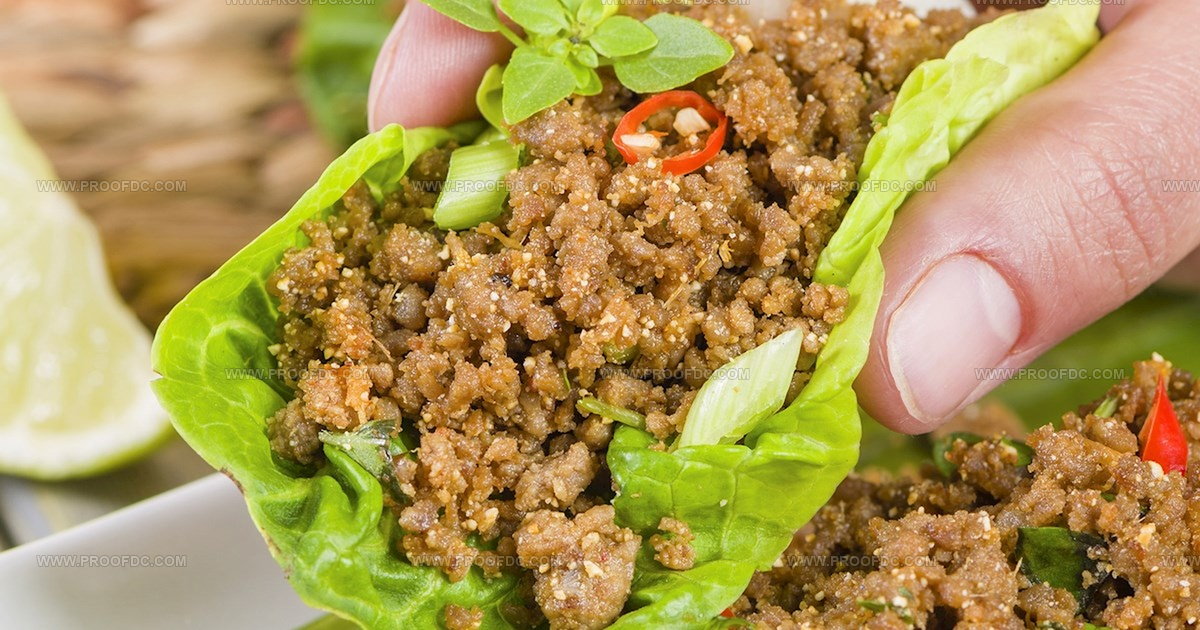
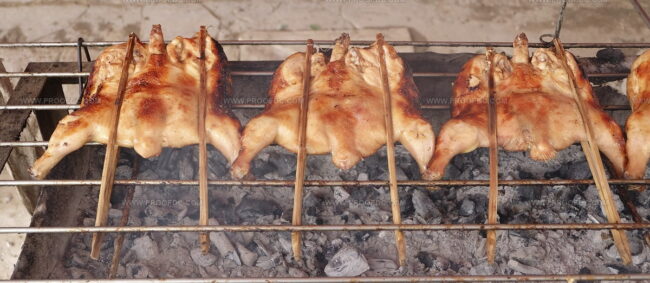
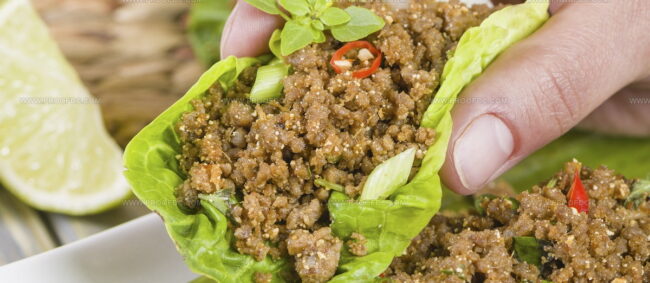
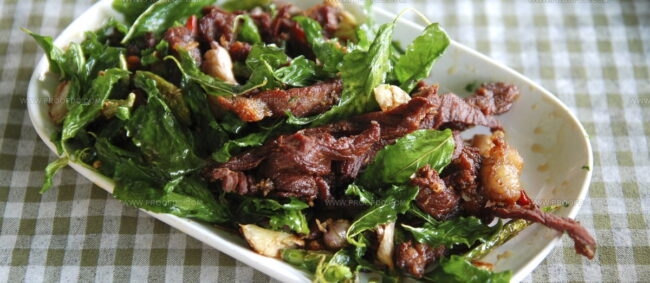
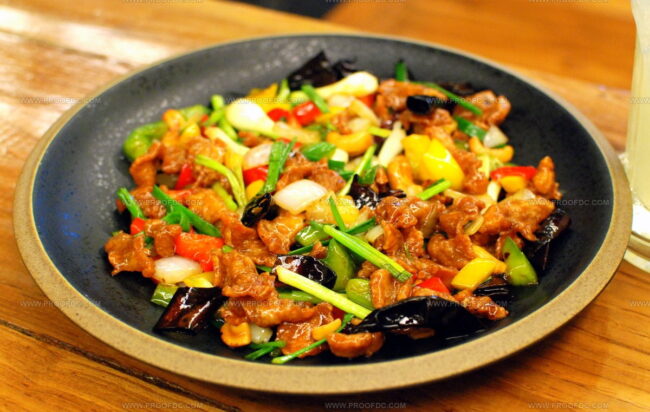
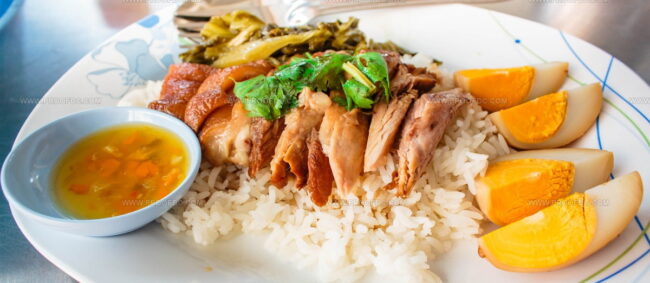
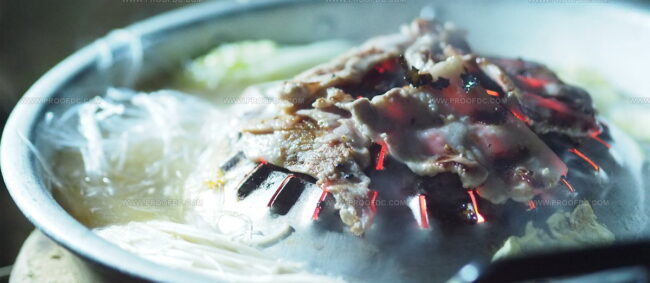
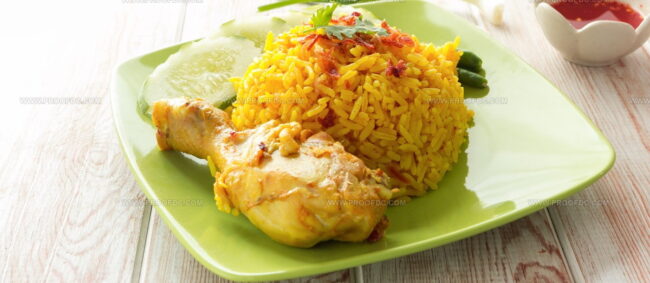
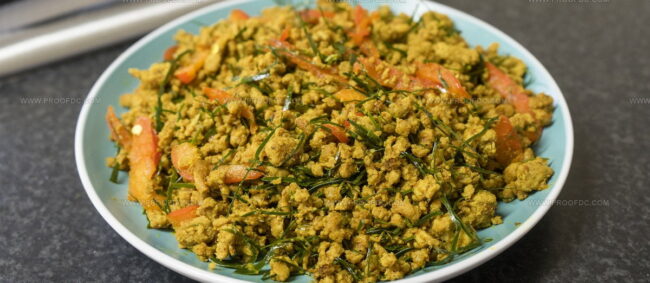
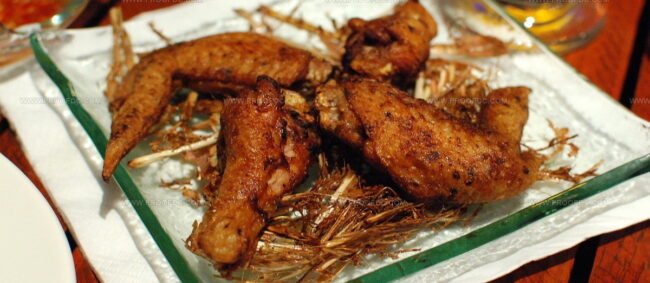
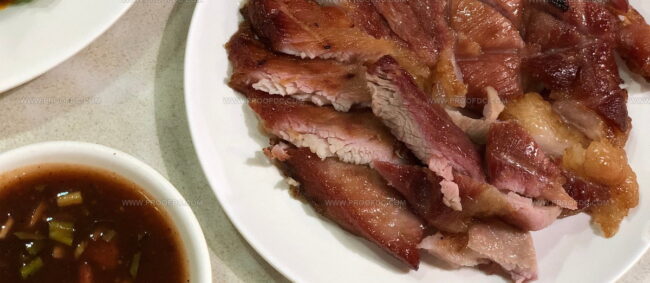
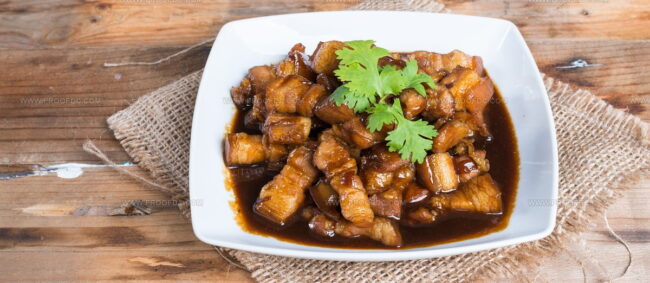
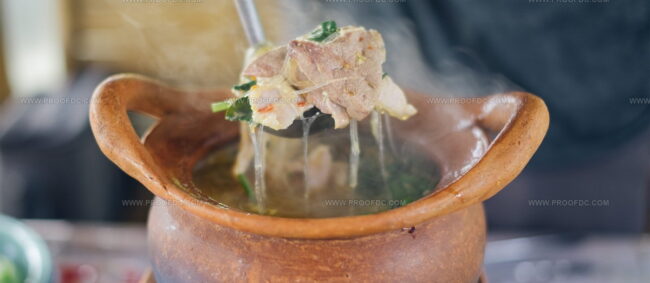
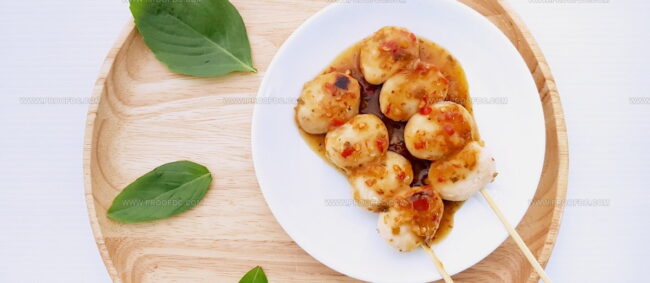
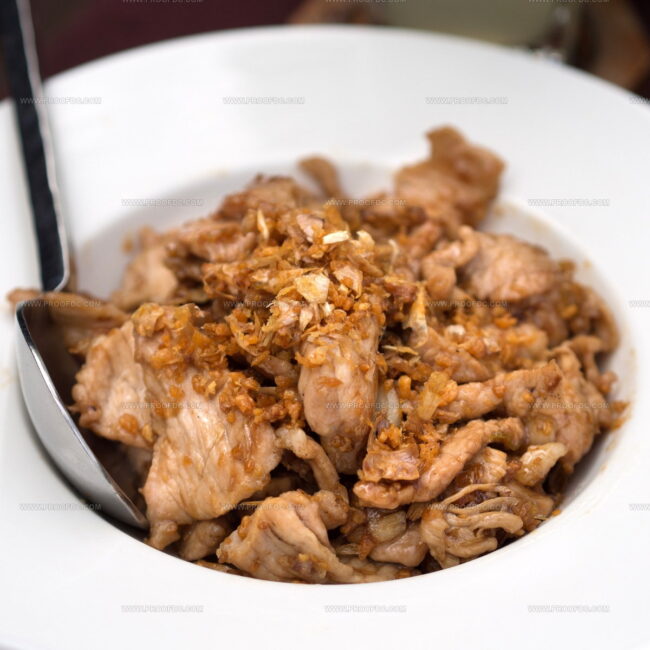
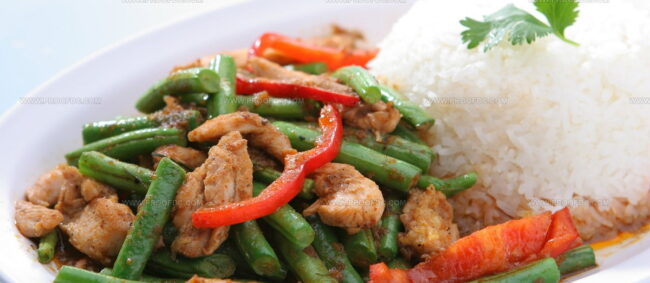
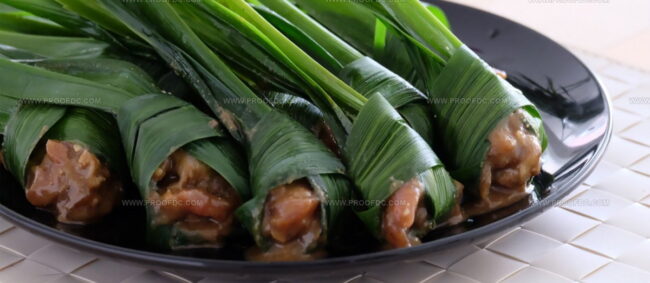
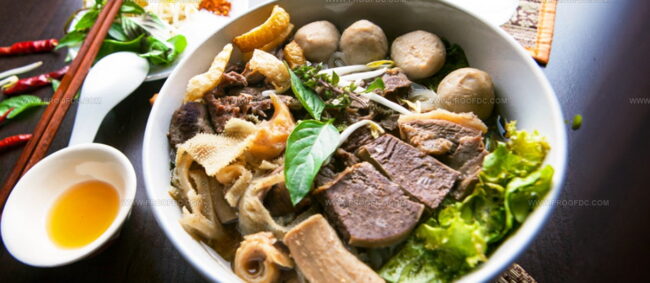
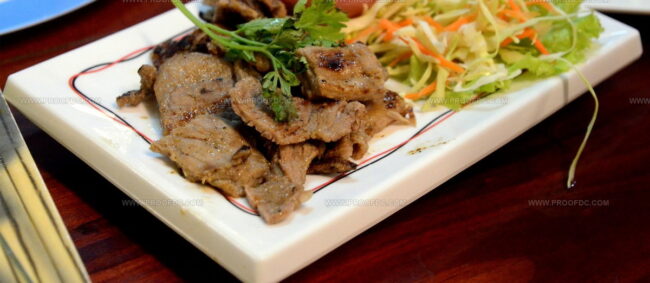
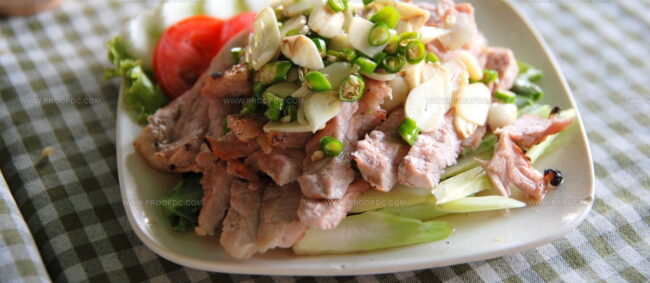
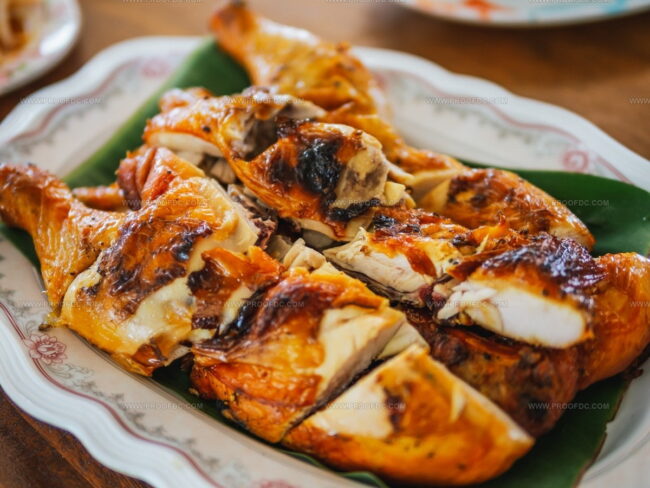
Jenna Stewart
Head Chef & Recipe Innovator
Expertise
Farm-to-Table Cooking; Seasonal Menu Development; Visual Plating Techniques; Flavor Layering and Simple Prep Hacks.
Education
The Culinary Institute of America, Hyde Park, NY
Jenna Stewart is the inventive spirit behind many of our standout dishes at Pro of Delicious Creations. A proud graduate of The Culinary Institute of America, she built her skills mastering both classic recipes and fresh, modern twists.
Now, Jenna celebrates the beauty of seasonal, local ingredients, often sourced from her garden and nearby markets, to create recipes that are bursting with flavor yet easy to follow. When she’s not experimenting in the kitchen, Jenna loves exploring nature on hikes and discovering new treasures at local co-ops.